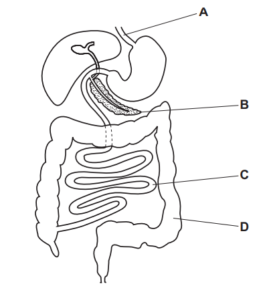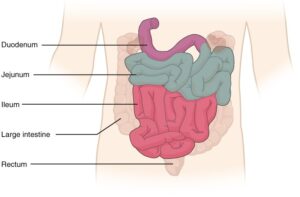Question
Excess alcohol affects the body.
Which statement explains the risk of driving after consuming excessive alcohol?
A Alcohol can be addictive.
B Alcohol causes liver damage.
C Alcohol slows down reaction times.
D Alcohol speeds up reaction times.
 Answer/Explanation
Answer/Explanation
C
The correct statement explaining the risk of driving after consuming excessive alcohol is C: Alcohol slows down reaction times.
When a person consumes excessive alcohol, it affects their central nervous system, including the brain. Alcohol is a depressant that slows down the functioning of the brain and impairs cognitive abilities and physical coordination. This includes a decrease in reaction times, which is critical for safe driving.
Driving requires quick decision-making, concentration, and the ability to react swiftly to unexpected situations on the road. Alcohol impairs these skills, making it dangerous to operate a vehicle. Slowed reaction times can result in delayed braking, poor judgment of distances, impaired coordination, and a reduced ability to perceive and respond to hazards, increasing the risk of accidents and injuries.
Therefore, it is essential to avoid driving after consuming excessive alcohol to ensure the safety of oneself and others on the road.
Question
Why does the energy needed by a human increase during the first ten years of life?
A Coordination and responses improve.
B Energy is needed for gamete formation.
C The body is growing.
D The diet is more balanced.
 Answer/Explanation
Answer/Explanation
C
The correct answer is C: The body is growing.
During the first ten years of life, the human body undergoes significant growth and development. This growth includes an increase in height, weight, bone density, and muscle mass. All of these processes require energy. The energy needed to support growth and development comes from the food we consume.
Children have higher energy requirements compared to adults because their bodies are actively building new tissues and organs, such as bones, muscles, and organs like the brain. This growth requires additional energy to support the synthesis of new cells and tissues, as well as the maintenance of existing structures.
Coordination and responses (option A) improving and a more balanced diet (option D) can influence overall health and well-being, but they are not the primary reasons for the increased energy needs during the first ten years of life. Energy for gamete formation (option B) is not relevant during this stage of life, as gamete production typically occurs during puberty.
Question
Which type of food is not digested before being absorbed by the body?
A carbohydrate
B fat
C protein
D water
 Answer/Explanation
Answer/Explanation
D
The correct answer is D. Water. Water is not digested by the body before being absorbed. It is absorbed directly through the walls of the stomach and the small intestine and enters the bloodstream. Carbohydrates, fats, and proteins, on the other hand, undergo various stages of digestion in the gastrointestinal tract before they are broken down into smaller molecules and absorbed into the bloodstream.
Question
The diagram shows the human alimentary canal.
In which structure is most glucose absorbed into the blood?

 Answer/Explanation
Answer/Explanation
C
The majority of glucose absorption occurs in the upper part of the small intestine, known as the duodenum and jejunum. These regions have specialized structures called villi and microvilli, which greatly increase the surface area available for nutrient absorption.
Once carbohydrates, including glucose, enter the small intestine, they are broken down into simpler forms by enzymes produced by the pancreas and small intestine. Glucose molecules are then transported across the epithelial cells lining the intestinal wall through specialized glucose transporters known as SGLT1 (sodium-glucose cotransporter 1) and GLUT2 (glucose transporter 2). From there, glucose enters the bloodstream through capillaries present in the villi.
It’s worth noting that some glucose absorption can also occur in the stomach and large intestine to a lesser extent, but the bulk of glucose absorption takes place in the small intestine.
Question
Which structure has a large surface area for the absorption of digested food?
A alveolus
B ileum
C liver
D pancreas
 Answer/Explanation
Answer/Explanation
B
The structure that has a large surface area for the absorption of digested food is the ileum. The ileum is the final section of the small intestine and is responsible for the majority of nutrient absorption in the digestive system. It has specialized structures called villi and microvilli, which greatly increase the surface area available for absorption. These finger-like projections increase the surface area of the intestinal wall, allowing for more efficient absorption of nutrients from the digested food into the bloodstream.

